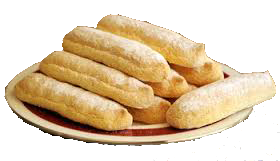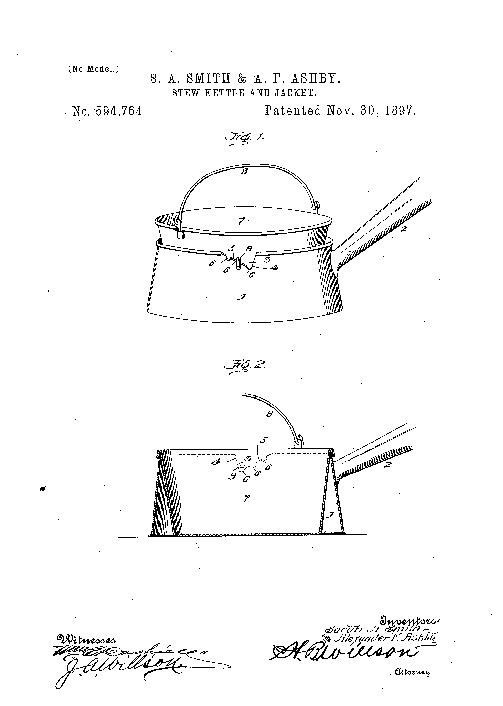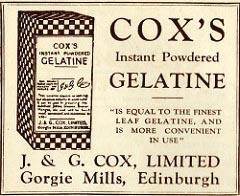Fifty years after Austin was founded, a group of women at the Cumberland Presbyterian Church gathered recipes from the women in the community and published the city’s first cookbook.
The Austin History Center has one of three known copies of “Our Home Cookbook,” published in 1891. Editors Medora Thornton and Lucy Lanier Davis gathered more than 300 recipes from 87 women in the capital city. In 2015, the Austin History Center republished a facsimile copy called Austin’s First Cookbook, with accompanying historical essays about the original book, the women who owned it and the women who contributed the recipes. We asked Mike Miller, who led the research effort behind the book, to help us dissect one of the recipes for Charlotte Russe to learn more about how food moved in Texas in the 1890s.

Charlotte Russe
This is one of six Charlotte Russe recipes in the book. Who was Charlotte Russe? Common lore has it that French chef Marie-Antione Carême (1784–1833) created the dish, named after Princess Charlotte, the only daughter of George IV. The word “russe” is French for “Russian,” and though Carême came to know the popular princess while working for King George, she died in childbirth while he was working for the Russian Czar Alexander I, and he created this dish in her honor. Most recipes include the molded ladyfingers and custard or Bavarian Cream, such as this recipe, but a simpler version of sponge cake, whipped cream and a maraschino cherry is sometimes also called a Charlotte Russe.

Sponge cake
Egg-heavy cakes were ubiquitous in this era. There are nine sponge cake recipes in this cookbook, including two different handwritten versions from the owner of the book. “Sponge” has long referred to the appearance of a cake lightened with whisked egg whites instead of yeast, and the batter is sometimes baked into elongated cakes called ladyfingers. Many claim sponges as a foundation of French cuisine, but Gervase Markham refers to sponge cake in her 1618 cookbook, The English Huswife, Containing the inward and outward Vertues Which ought to be in a Complete Woman.

Mrs. Littlefield
Alice Tiller Littlefield was the wife of George Littlefield, a Confederate officer who went on to become a banker. After the war, the Littlefields were one of the richest families in Austin, and although Alice Littlefield submitted 13 recipes to the book, including this one and another for Charlotte Russe, she didn’t do much cooking. According to her letters, she hired many cooks and didn’t keep them long. These recipes were likely theirs, though we don’t know the cooks’ names or backgrounds.

Farina kettle
Double boilers such as the farina kettle were used to heat milk, cream or other liquids without scorching them. “Farina” refers to the cereal grains that cooked so well using this utensil. This patent is from 1897, several years after the publication of this recipe, but farina kettles and other kitchen gadgets gained popularity after the industrial manufacturing boom that followed the Civil War. Then, railroads could move freely from north to south, and capital was again available for manufacturing.

Sugar
The Texas sugar industry took off after the first refinery opened near Houston in 1879 on a plantation that had been growing sugarcane since 1843, according to food writer M.M. Pack. Eventually, that company became Imperial Sugar Company, which built a town called Sugar Land so its employees could have housing, schools and even retail outlets and medical care.

Cox’s gelatine
Cox was one of three well-known gelatin brands at the time. Before production was standardized, women had to make their own gelatin from animal bones, mostly horse and sometimes cattle. Gelatin from the New York-based Cox Gelatine Company [sic] was originally made in Scotland. The arrival of the railroad in Austin in 1871, and refrigerated rail cars about ten years later, made it much easier for Austinites to expand their ingredients list beyond what could be produced locally.

Author
After a two-year stint trying to grow watermelons and raising backyard chickens, Austin American-Statesman food writer Addie Broyles decided that maybe some aspects of growing food should be left up to the experts. She’s the co-founder of the Austin Food Blogger Alliance and writes about quilts, kids, travel and gender politics at thefeministkitchen.com.